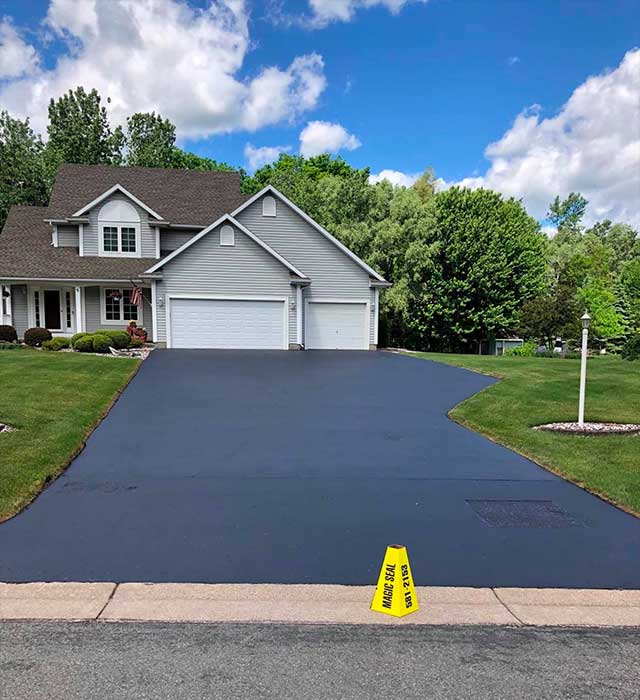Boost Durability with Cold Mix Asphalt: Specialist Sealing Solutions
Wiki Article
Cold Mix Asphalt Vs. Hot Mix Asphalt: Which Is Right for You?

Make-up Differences
Cold mix asphalt is created by emulsifying the asphalt binder with water and an emulsifying representative prior to blending it with accumulation. The warm mix asphalt manufacturing procedure entails warming the accumulation and asphalt binder independently prior to integrating them at the asphalt plant.
Furthermore, cold mix asphalt tends to be less thick and a lot more flexible than hot mix asphalt. This versatility makes it much better suited for areas with higher levels of movement, such as driveways or roadways with rush hour. On the other hand, warm mix asphalt is understood for its high longevity and resistance to rutting and fracturing, making it a favored selection for freeways and high-traffic roads where longevity is crucial.
Setup Refine Differences
The process of mounting cold mix and warm mix asphalt shows noteworthy differences in their needs and treatments. In comparison, warm mix asphalt requires an extra sophisticated setup process. Due to the home heating needs, hot mix asphalt installments are commonly carried out by experts with specific tools, guaranteeing an extra structurally sound and long-term result.Toughness and Durability Aspects
When thinking about asphalt alternatives, resilience and longevity are crucial variables to evaluate for lasting sidewalk performance. Warm mix asphalt (HMA) is recognized for its exceptional resilience and longevity.
In regards to durability, HMA typically outmatches CMA as a result of its remarkable stamina and resistance residential or commercial properties. HMA sidewalks have a longer service life, requiring much less regular repairs and upkeep, which can translate cold mix asphalt to cost savings over time. Additionally, HMA sidewalks are much more quickly adjustable to fulfill details project needs, additionally improving their durability.
Expense Factors To Consider
Considering the monetary effects is a vital facet when evaluating the selection in between warm mix asphalt (HMA) and cool mix asphalt (CMA) for pavement tasks. While the first price of warm mix asphalt is normally greater than that of cool mix asphalt, HMA usually gives an extra economical service in the long run due to its exceptional sturdiness and durability.In addition to product costs, it's crucial to think about the expenses linked with installation and upkeep when comparing HMA and CMA. Ultimately, the decision in between HMA and CMA should take right into account not simply the preliminary price but likewise the lasting monetary effects to identify the most cost-efficient option for the particular pavement task.
Environmental Effect Contrast
Contrast of the ecological influences in between warm mix asphalt (HMA) and cold mix asphalt (CMA) exposes unique differences in sustainability methods. HMA manufacturing calls for heats, causing increased energy intake and greenhouse gas exhausts. The procedure also releases unstable natural compounds (VOCs) and hazardous air pollutants (HAPs) right into the atmosphere. In contrast, CMA is generated and used at reduced temperature levels, minimizing energy usage and discharges significantly. The lower production temperature levels of CMA cause lowered gas intake and reduced levels of CO2 emissions, making it a much more eco-friendly alternative.In addition, the use of CMA often involves recycling existing asphalt pavement, promoting source conservation and reducing the amount of waste sent out to garbage dumps. By choosing for CMA over HMA, roadway building and construction jobs can add positively to ecological conservation initiatives.
Final Thought
Finally, the selection in between cold mix asphalt (CMA) and hot mix asphalt (HMA) relies on various elements such as structure, installment process, toughness, long life, cost, and environmental effect. asphalt repair. While CMA offers a quick and economical option for small repairs, HMA makes sure premium resilience and long life for rush hour locations. Think about these aspects very carefully to identify which type of asphalt is the best option for your paving requires

Thinking about the financial ramifications is a crucial element when assessing the selection in between hot mix asphalt (HMA) and chilly mix asphalt (CMA) for sidewalk projects. While the initial expense of warm mix asphalt is generally greater than that of cool mix asphalt, HMA frequently offers an extra cost-effective service in the lengthy run due to its premium longevity and longevity. asphalt repair.Contrast of the environmental impacts between hot mix asphalt (HMA) and cool mix asphalt (CMA) reveals distinct differences in sustainability methods.In final thought, the option between cool mix asphalt (CMA) and warm mix asphalt (HMA) depends on numerous variables such as composition, installation process, toughness, longevity, expense, and ecological influence
Report this wiki page